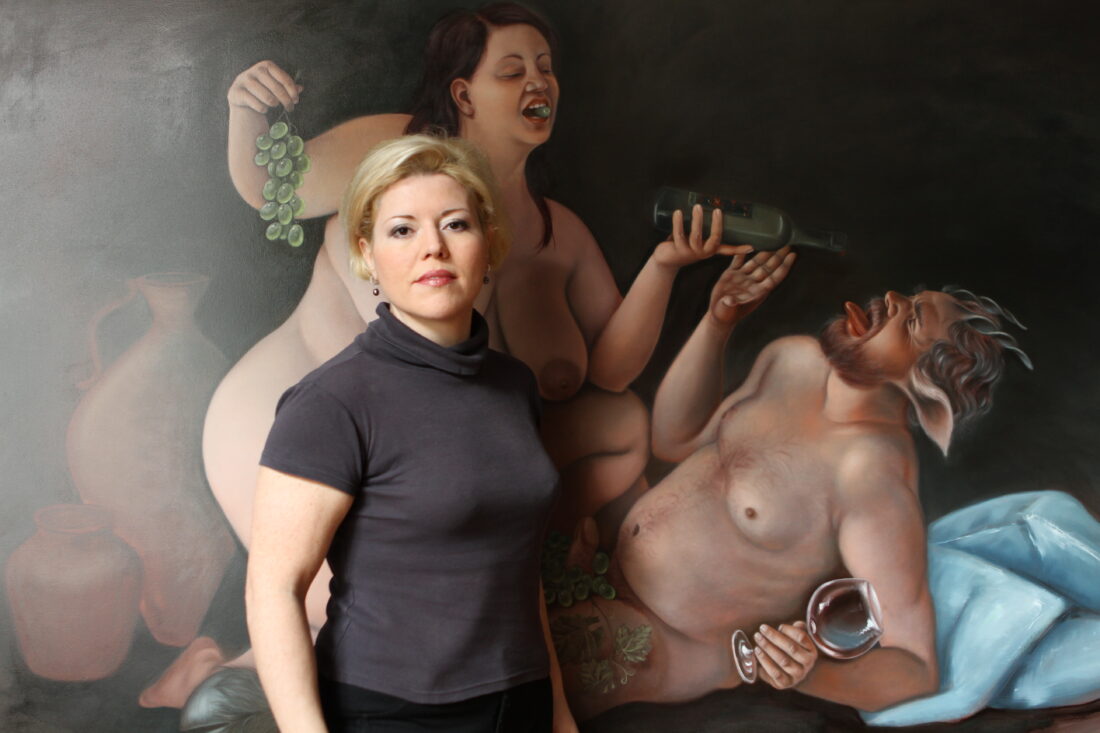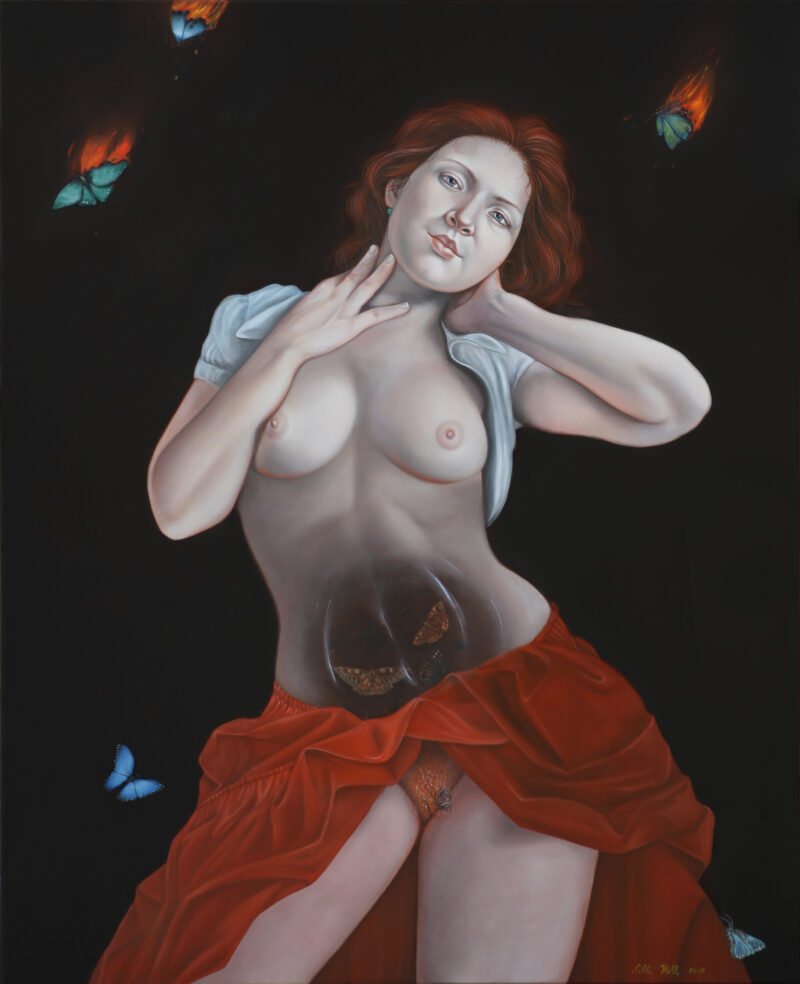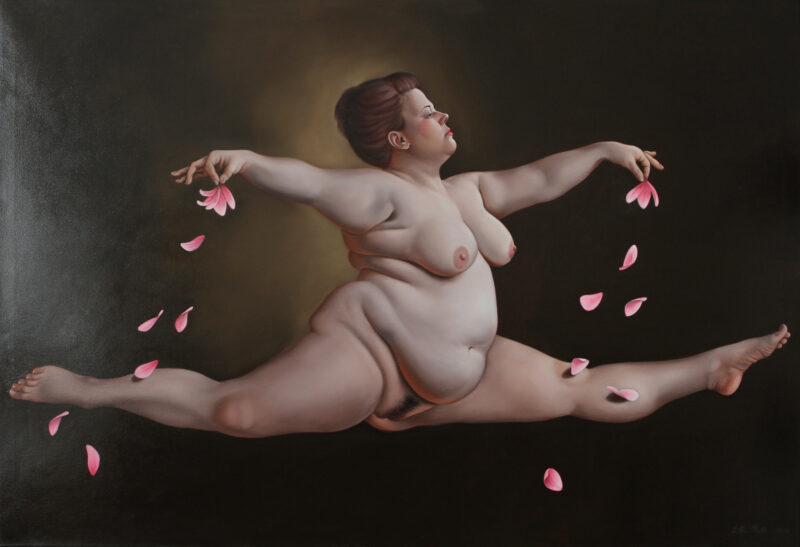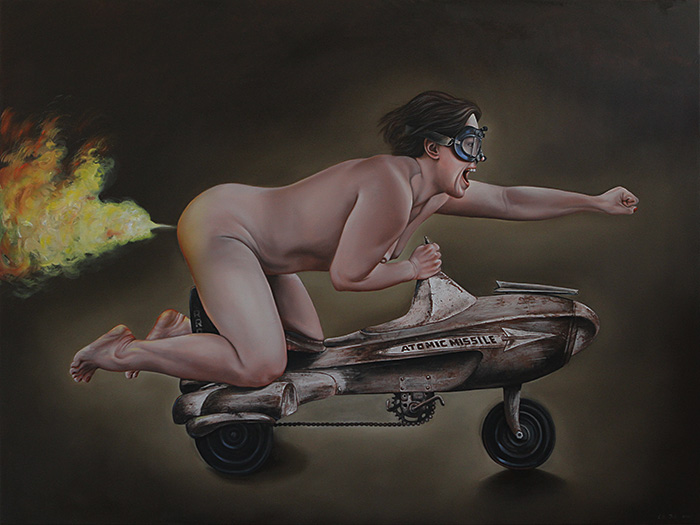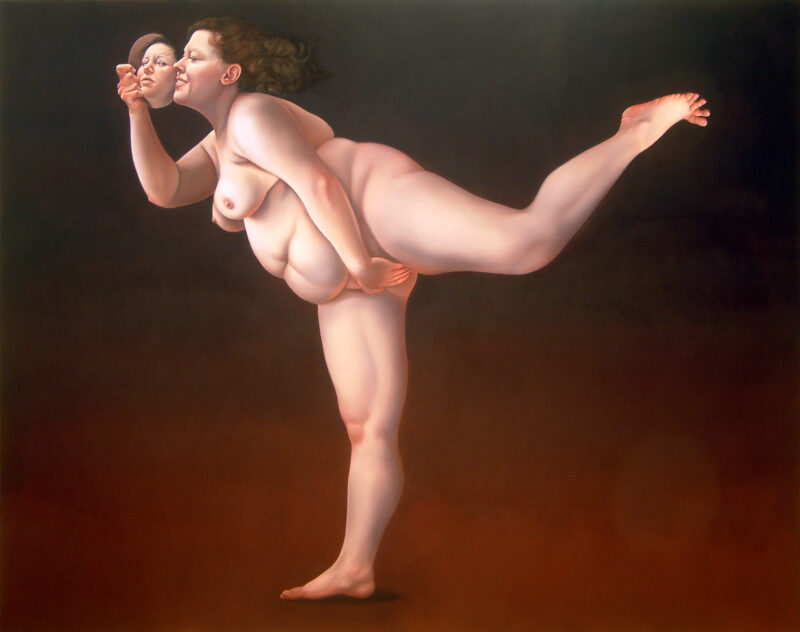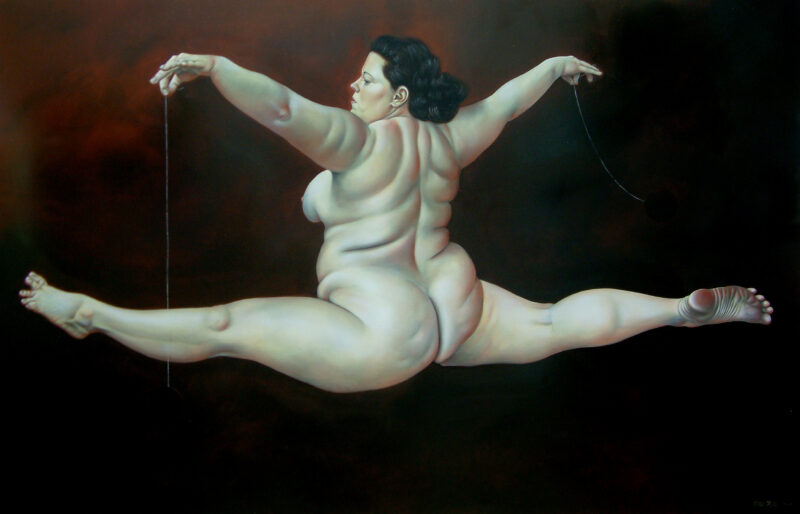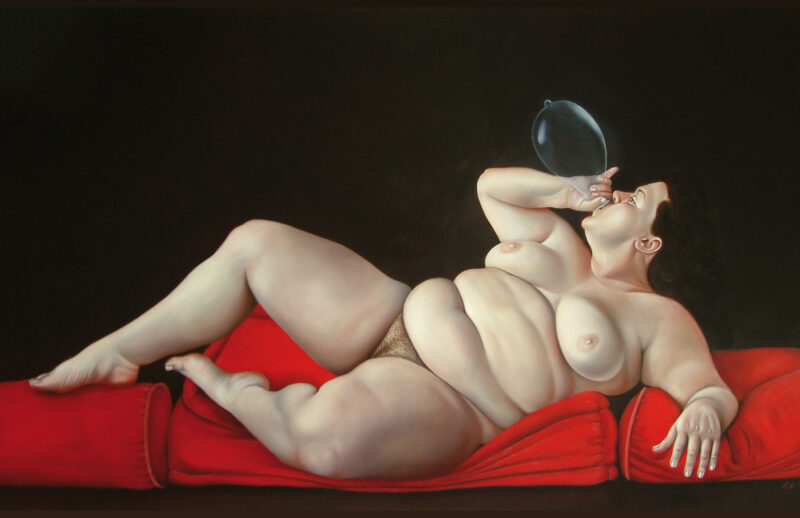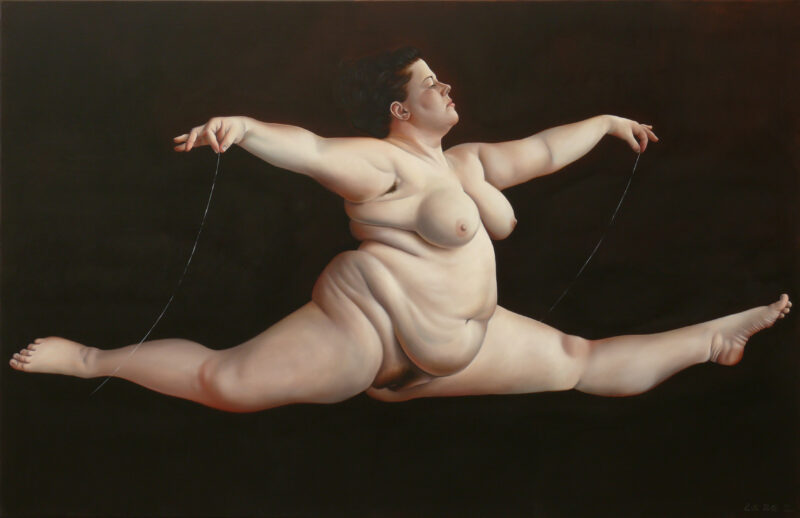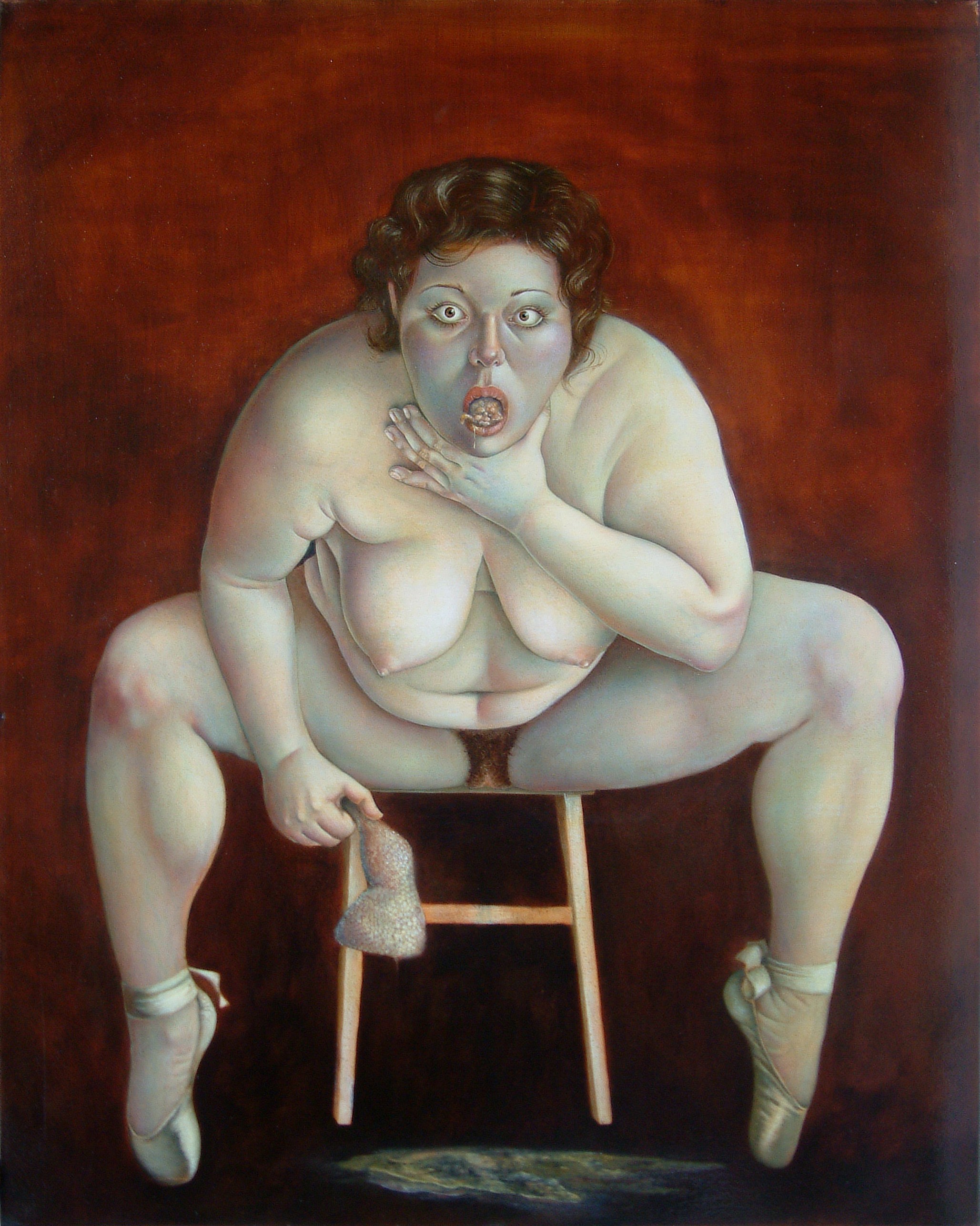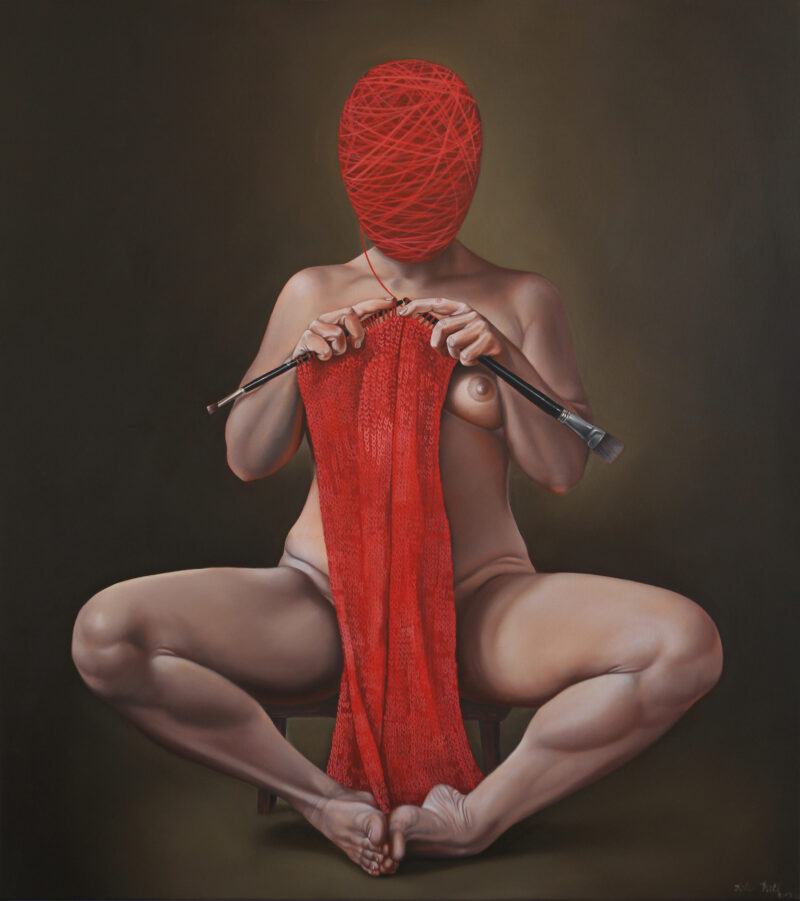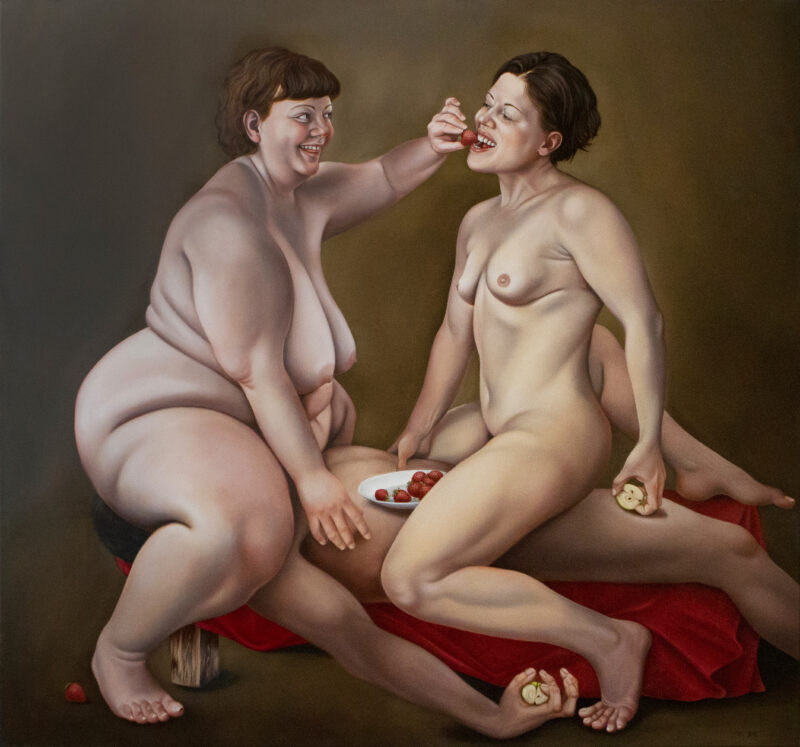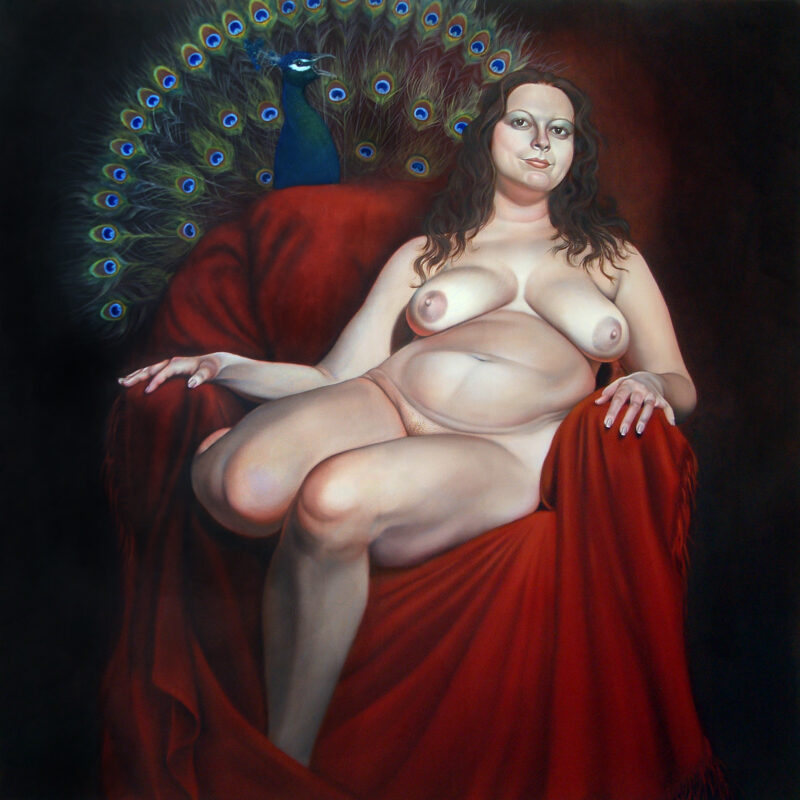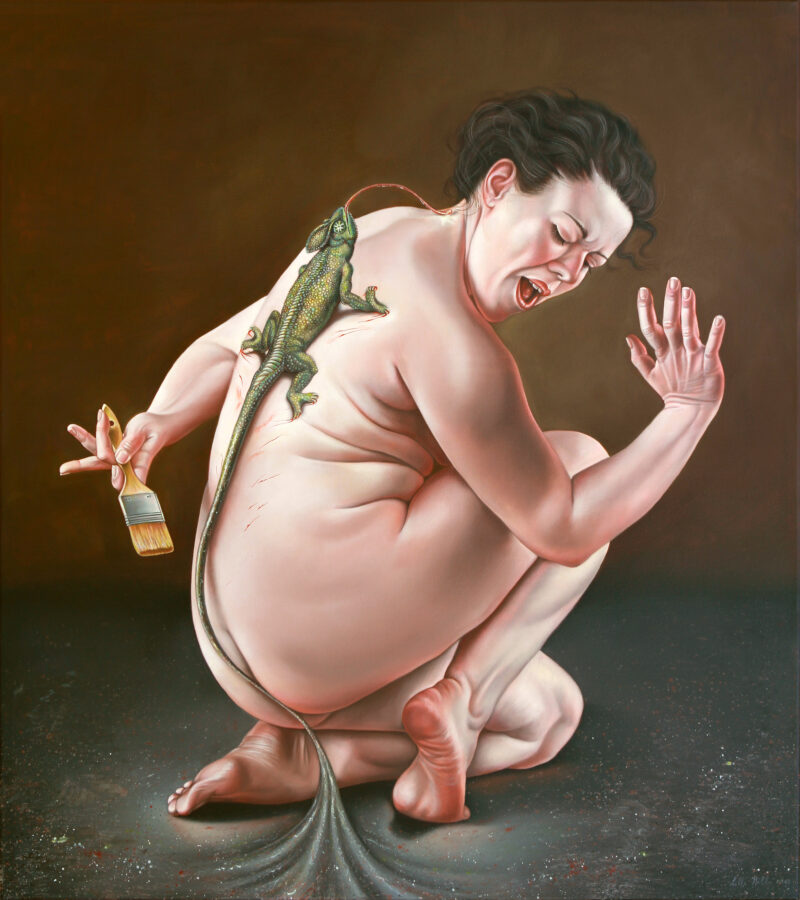Lilli Hill
Lilli Hill
Lilli Hill
From an early age, Lilli Hill was aware of her ability to see the world through a different lens. She was born in Abaj, Kazakhstan, influenced by her fathers creative atmosphere, who was an ambitious amateur photographer and draftsman. She began as a painter, at the age of 13 in the studio of the local artist K.Ostapka, giving her the opportunity and tools to visualize her ideas. After moving to Germany, she studied graphics, art history, philosophy and painting (with Prof. Jürgen Störr) at the University of Wuppertal and conducted intensive studies of painting techniques of Museum Old Masters. Exhibitions portraiting lusty baroque women followed in galleries and museums. Lilli Hill lives and works in Berlin and Thalwil.
Lilli Hill
- 1. Lilli, tell us why you decided to become an artist.
There is no simple answer. I was always interested in art and possesed the ability to express it in a way I hadn’t seen before. As a child, curiosity drove me to libraries where I would look for pictures, illustration and art books. I had an urge for creating, paired with wonder and questioning about everything around me. My intention was not to make a living off of art, nor to be an artist. Back in 1993 when my family moved from Kazakhstan to Germany, my interests grew while studying Art, Philosophy and History in Wuppertal. Even today, my passion for art remains, my intention is, to be an artist.
- 2. What kind of artist do you consider yourself?
I am an emotional artist. My relationships have strongly and partially influenced my work. Besides art, my vegetable garden and meeting people are important to me. I love opera houses, classical concerts and jazz. My painting technique requires a lot of time to elaborate therefore I only paint a few paintings a year. Every single painting is very intense in the making.
- 3. Do you have any mentors or advisors?
During my studies, my Art Professor Jürgen Sturgeon was my mentor and advisor. He is the person who influenced me the most. His style paired with his experience was something I looked up to, so I implemented his praise and criticm into my artwork, slowly improving over time.
- 4. What is your artistic process for creating work?
The beginning of a creative process is a triggering experience. Thoughts and emotions are leading factors. It takes a strong input to get just one idea and a picture design developed. A few days or weeks later, the idea matures internally. I like to attend exhibitions or go for a walk to live in my own world of ideas. Once I know what I want, it progresses very quickly. Photos and drawings are made, the canvas size determined and so it is painted. Every beginning is emotionally charged. I identify myself strongly through my work. As the process of painting calms down so does my mind and I focus on completion. A big moment is always the sale- that’s the biggest compliment for an artist. If one experiences the appreciation of one’s work in this way, it strengthes creativity enormously.
- 5. Name three artist you admire.
Many Baroque artists are my role models. Sinaida Serebrjakowa would be one female artist from Modern History I admire a lot.
- 6. Have you overcome any challenges in your career?
Naturally. Especially in my family environment as it was difficult to make the decision to become an artist, or to follow through with my choice. Although the economic success did not reflect my social success, it was worth it nonetheless.
- 7. Has gallery representation always been your dream or working independently been more beneficial? Or both?
I have worked with art galleries from the beginning. the split of labour is very useful for both sides. Gallery owners and artists often have different competencies and complement each other in a very favorable way.
- 8. Tell us one of the weirdest or funniest moments of your career.
The funny people I meet in my exhibitions! There was a plastic surgeon who makes people slim and makes women look like models from glossy magazines but in private buys a painting of a corpulent woman like his wife. Or a middleaged architect couple who bought my first ‘Spagat’ painting and built their piano room around it. There are many anecdotes…
- 9. What advice would you give to an emerging artist ?
Focus on marketing through social media and on the internet, but do not forget to take the classical route; galleries, or public exhibitions, there are many possibilities.
- 10. As you reflect, what has been the influencing factors in your Art career?
The move from Kazakhstan to Germany when I was 16 was probably the decisive factor for my career. To have the opportunity to study Art in a developed art market and to make my mark as an artist are some of the most important goals for an artist. Other factors occur naturally with time, such as the people I might meet along the way, and the places I can showcase my work.
- 11. What are you currently working on?
On an act!
It is a couple’s painting. The women stands naked with her back to the viewer. The man kneels behind her, clasping her legs and buriying his face in her butt. It is about power, the power of change, love, sexuality amd the complexity of relationships.
Lilli Hill gallery representation in Zurich by Galerie Claudine Hohl.
Zweierstrasse 111, 8003 Zürich
